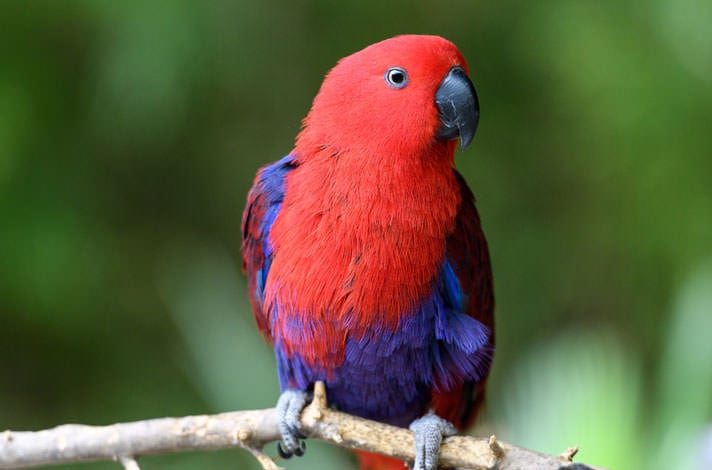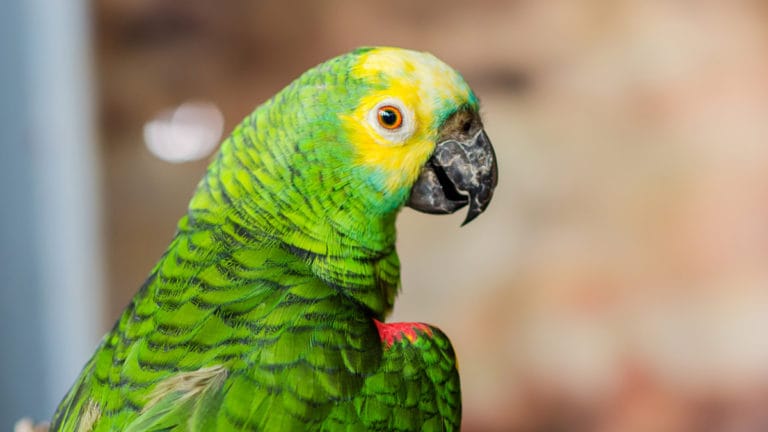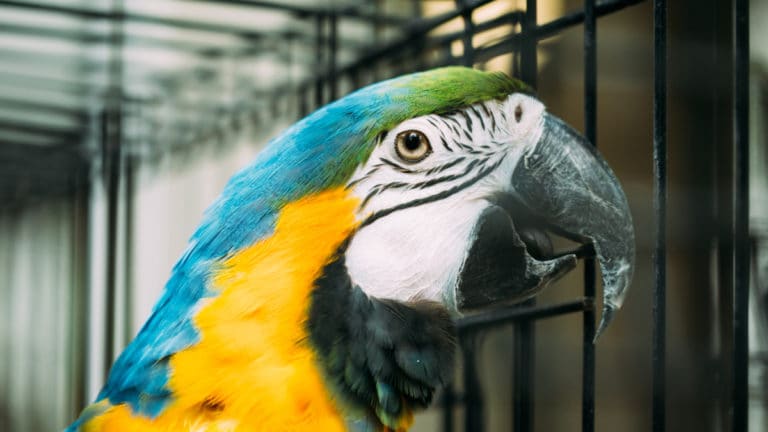Q:
I have a wonderful 4-year-old female Eclectus named Ruby that I hand-raised. Up until last year, she was my best friend and a wonderful pet bird. However, she recently began laying clutch after clutch of eggs. How can I prevent her from doing this? Is it better to get her a mate or send her to a breeder? Will she be unhappy when none of the eggs hatch? I want her to be happy, but I also would like my sweet little girl back.
A:
What you describe is becoming a familiar scenario now that we know how to properly care for our pet birds. Good nutrition, yearly health examinations, and appropriate diagnostics and treatments have all contributed to pet birds being healthier. One side effect of all this is that pet birds are approaching sexual maturity at early ages and often begin demonstrating sexual behaviors.
Some young adult male pet birds start masturbating on perches, toys or even their owners. Often young female pet birds of the larger species begin laying eggs as early as their second year, although many won’t. Some species seem more prone to laying eggs (without the presence of a male bird) than others. Cockatiels, Eclectus and many cockatoo species often oviposit (lay eggs) even without the presence of an appropriate nest box and a con-specific male. Most of these egg-laying birds are closely bonded to their favorite pet bird person.
Egg-Laying BehaviorSome female pet birds appear completely oblivious to the fact that the egg that was produced is hers for safeguarding and continue to go on their merry way, acting as if nothing has happened. With other hens, their maternal instincts kick in (most likely due to an increase in female hormones,) and they begin protecting the egg (or clutch of eggs) by becoming cage-aggressive, charging any potential threats (fingers, other birds, etc.).
Once the female pet bird completes the clutch, she sits tightly on the egg(s), attempting to incubate them for hours on end. Normally, during this time, the male bird faithfully feeds the hen by regurgitating food to her, so she doesn’t need to get off the eggs. The hen might leave the eggs twice a day just to pass droppings, stretch her wings, get a drink of water and a bite to eat on her own. During this time, the eggs cool down slightly, which is a normal part of incubation in some species.
With other species, the male and female take turns sitting on the eggs, and for those species, the single hen may spend more time away from the eggs, which is a healthier situation for her. This allows her more time to eat, socialize and exercise.
What You Can Do For Your Egg-Laying Pet Bird
So what should you do if you have a healthy hen that continues to lay clutch after clutch of eggs?
1.
Egg-laying hens require a balanced, healthy diet and additional calcium in one of the many forms available for birds. Cuttlebone, mineral blocks, cottage cheese or other types of cheese (the lactose is removed in the process of making these products), Tums and almonds are all good sources of calcium.Full-spectrum light or natural sunlight (not filtered through glass or plastic) to provide UVB ultraviolet light is necessary for normal calcium metabolism.
2.
Manipulate your female pet bird’s environment. Some species (cockatiels and Amazons) breed with increasing daylight hours, so limiting the hen’s light hours and increasing darkness can break the cycle, too. Single female pet birds usually lay eggs on the floor of the cage or in a food dish or other “suitable” area. Removing the favored object, whether a sleeping tent or special food bowl, could prevent or delay egg-laying. Remove any objects that she regurgitates on. Decrease feeding soft foods. In some cases, if the bird perceives an owner as a mate, that person may need to decrease handling the pet bird while she is acting hormonal.
Moving the location of the cage and rearranging the cage appointments might also confuse a hen’s cycle. The lay-interval for most psittacines is two days.
3.
Always leave the eggs untouched if the hen is sitting tightly. Removing the eggs can incite a hen to continue laying eggs, which will eventually deplete her of vital nutrients such as calcium and protein. This could lead to soft-shelled eggs that may be difficult or impossible to pass normally; low blood calcium (hypocalcemia), which can cause spontaneous bone fractures; dystocia (difficulty laying eggs and then dehydration); seizures or even death.
The hen will usually sit on the clutch until the hatch-date has come and gone, and she will instinctively know when to abandon the eggs. If an egg develops a crack or hole from a toenail, then the egg or clutch might have to be replaced with white ceramic or quartz eggs so they don’t begin to develop infectious organisms in them.
4.
Begin weighing her weekly to monitor her for any gain or loss. My clients who regularly weigh their female pet birds can usually predict when their hen is getting ready to lay an egg, based on weight gain. For example, one client’s sun conure rapidly gains approximately 20 grams when she is ready to oviposit.
5.
If you haven’t taken your pet bird in to see an avian vet for routine examination and testing, this should be done after her first clutch of eggs has been abandoned (or sooner, if you suspect any problems). A hen that tends to sit very tightly on her eggs could lose weight without the support of an attentive male to help feed her. Although it is normal for a hen to not soil her eggs or her nest, retaining fecal material might exacerbate an underlying intestinal infection. The stress of incubating her eggs might exacerbate a subclinical infection.
6.
Hormonal injections are effective in the right situations, and there are several on the market.
7.
Removing a portion of the oviduct can also stop a hen from laying. After this surgery, they might be able to ovulate, but they won’t produce an egg. In the hands of an experienced avian surgeon, “paying” is a safe procedure.
Many owners fret over whether or not they should acquire a mate for their hen, or if they should give her to a breeding facility. Almost all egg-laying hens are closely bonded to their pet bird owner.Is it better to break that bond by transferring her to a breeding facility, hoping that she will bond to a male con-specific? It might work, or the hen might pine away for her owner. Acquiring a mate for the pet bird, hoping they will breed could work, but if they bond, then the owner might end up the “odd man out.” And not every owner of a hen is ready for the responsibility of rearing offspring or is able to find homes for those fledglings. My feeling is that if the pet bird is healthy (she is laying normal eggs); if she is sitting on the clutch of eggs (so that she is not laying excessively); if she is not losing weight; if the owner sincerely wants to keep her as a pet; and if the owner can deal with the fact that once or several times a year the hen will produce a clutch of infertile eggs, then the pet bird is just doing what comes naturally, and there is no need to find the hen a “mate.”
These are, of course, just generalizations, and the decision of what to do for the egg-laying female pet bird should be based on her medical condition, your avian vet’s opinion and your own feelings on the subject. If your avian vet is not well-versed in reproductive issues, ask him or her to request a consultation with an avian specialist affiliated with their veterinary diagnostic lab.
Posted By: Chewy Editorial
Featured Image: Via Eric Kilby/Flickr
Share:










